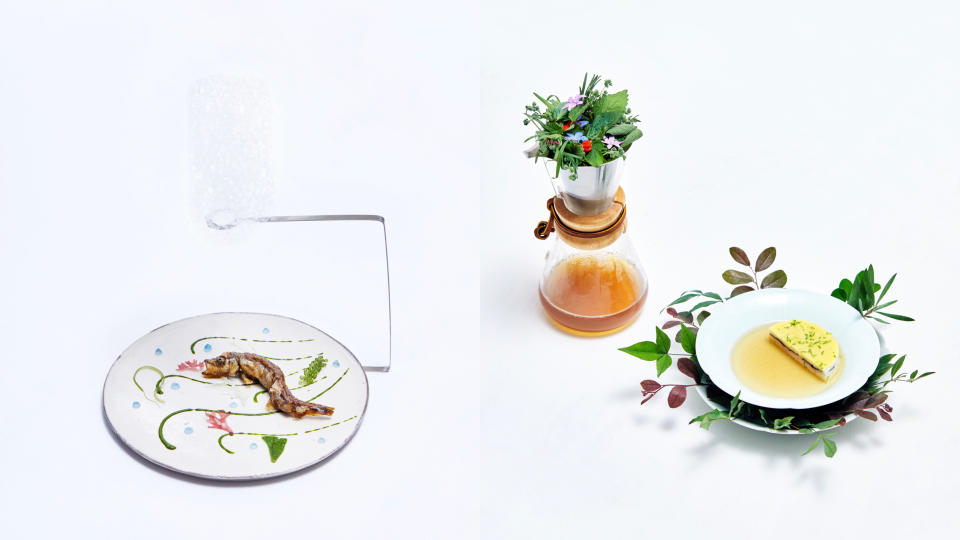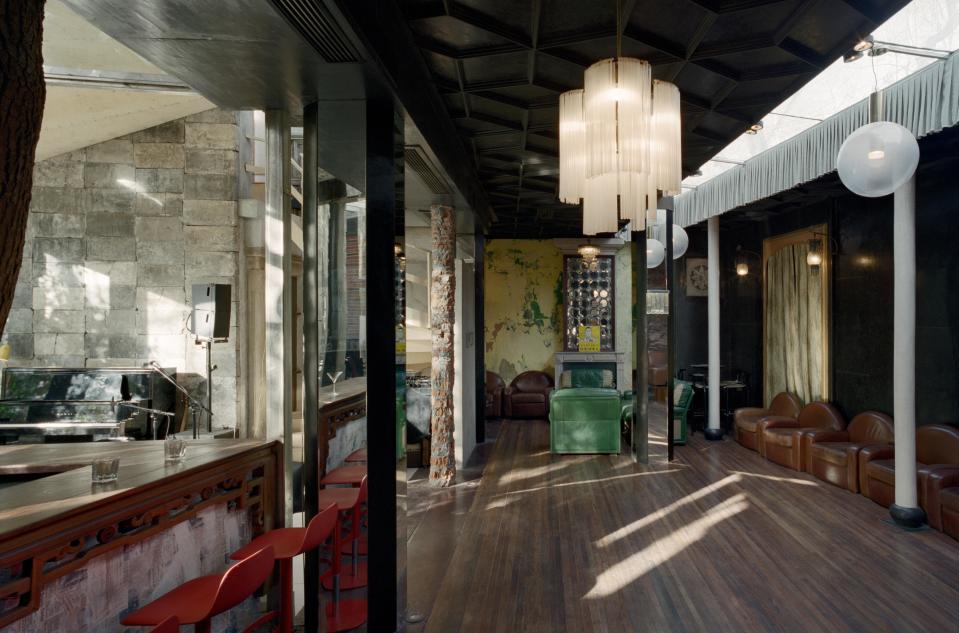A Fashion Alcove’s Update on Old-time Allure

There’s no better way to understand how East could meet West than by visiting Yongfoo Elite, an 18-year-old club-restaurant in the heart of Shanghai’s former French Concession.
Tucked away on a winding street in the former residence of the British consul general, Yongfoo Elite became the preferred hangout spot for fashion insiders and cultural elites in its early days.
More from WWD
Its era-clashing courtyard is made up of a Chinese-styled garden, a contemporary glass house and a ’30s Spanish-styled house. One is teleported to a scene in an Eileen Chang novel, or perhaps a Wang Kar-wai film set.
The storied location has appeared in glossy magazines and served as a backdrop for the Pirelli calendar in 2008.
Yongfoo Elite is the brainchild of Xingzheng Wang, a 69-year-old Shanghai local who gained success as one of the country’s first menswear designers in the ’80s. His brand Sha-Er-Wei, later Jun Long, became one of the first Chinese brands to enter department stores. By the ’90s, he had more than 30 doors across the country.
But as impulsive as a fashion personality can be, Wang fell out of love with fashion in the ’90s, abruptly shuttered his brand, and set his eyes on the restaurant business. Yongfoo Elite was his third venture and became his life’s work.
During Shanghai’s initial two-month COVID-19 lockdown, Wang continued to renovate the space, adding ancient stone decorations and tearing down walls halfway, intending to make it look somewhat unfashionable.

He also launched a new fine dining venture at Yongfoo Elite, perhaps on a whim, to explore his newfound interest in fusion cuisine.
To head up this new experiment, Wang hired the Noma-trained Chinese chef Chang Liu, who orchestrated a menu that includes dishes such as Shanghai-styled oiled tart with caviar and Wagyu beef with Shanghai greens, and which ends on a high note with a soy sauce ice cream.
Wang likened his new project to a probe of Chinese and Western cultures, a culture embedded in the Shanghai psyche.
“Shanghai has always been known for its petite bourgeois sensibility — the keyword is petite. It’s never gotten a chance to grow up,” says Wang. “After New China came to be, it blossomed into what we call the ‘Haipai’ Shanghai style. It welcomes all things foreign and new, then culturally transmutes it to become something more local.”
Wang notes consumers’ new draw to a more “aesthetically driven” dining experience, “and frankly, Chinese cuisine is moving slower in that sense.”
“Shared at a round table, often cooked in an open flame, one could say Chinese cuisine is less civilized, but there’s a certain worldly appeal. Chinese cooking usually goes for a grand feast. Mentally, it stays true to a family-oriented consciousness.”
Having won a Michelin star for his Chinese restaurant serving Shanghainese cuisine, Wang went on to dissect the two styles of cooking, which have taken equal prominence at Yongfoo Elite recently. “In practice, we talk about Chinese cooking ‘techniques’ a lot, but rarely about the ‘art’ of cooking,” adds Wang. “But Western cuisine has become a feast for the five senses, for individual pleasures.”
Even though his friend, the prominent novelist Jin Yucheng, has urged Wang to start writing a biography, he prefers to spend more time working on Yongfoo Elite.
A big change was to make Caixiang Study, the private lounge area, into an extended section of the “Keep It Quiet” bar. A study has traditionally been a space to gaze into the creator’s mind but here, one can gain a glimpse into Wang’s interior design process. Homing in on his favorite fashion design techniques, like collage or grafting, Wang plastered bar tables in old Italian fabric, encased overhead lights in an oddly shaped metal cage, and exposed more walls to show layers of colorful decay. He got rid of a Ming-dynasty monastic bed, but kept a set of ’60s Gucci sofas, with plans to add more vintage furniture to cozy up the space.

It’s all meant to be a little messy. “I like designing a space like how I used to design clothes — there could be seven or eight different aesthetics involved, but then I break their boundaries,” says Wang.
He calls Yongfoo Elite a work of “cross-pollination” of different styles, just like the open mic events he likes to host, where performance artists, ethnic musicians and poets come and improvise however they want. But there’s a call for Eastern naturalistic principles at the core of his work. Wang is finessing the idea of “just about right,” leaving space for unplanned serendipity, a rare occurrence in Shanghai’s growing expanse of social media-driven cafes and bistros.
Pointing to an exposed column at the center of the lounge area, Wang says it was designed by the handymen, which meant stopping the workers halfway because he liked the layers of exposed architecture.
Wang says his design “is more of the setup of a way of life rather than a holistic design concept.” He doesn’t like to be called a businessman and banishes commercial rules. Instead, he is free to make his own.
“This is something that people with a lot of money won’t and can’t build. It’s about reflecting my personal reality, rather than pursuing anything exterior,” he says.
Wang says a place like Yongfoo Elite would likely never happen again, and he says the government has agreed to preserve it as a cultural establishment after he retires. “It started as a crazy idea, but when the idea sprang up, I just let myself go all the way.”
Best of WWD
